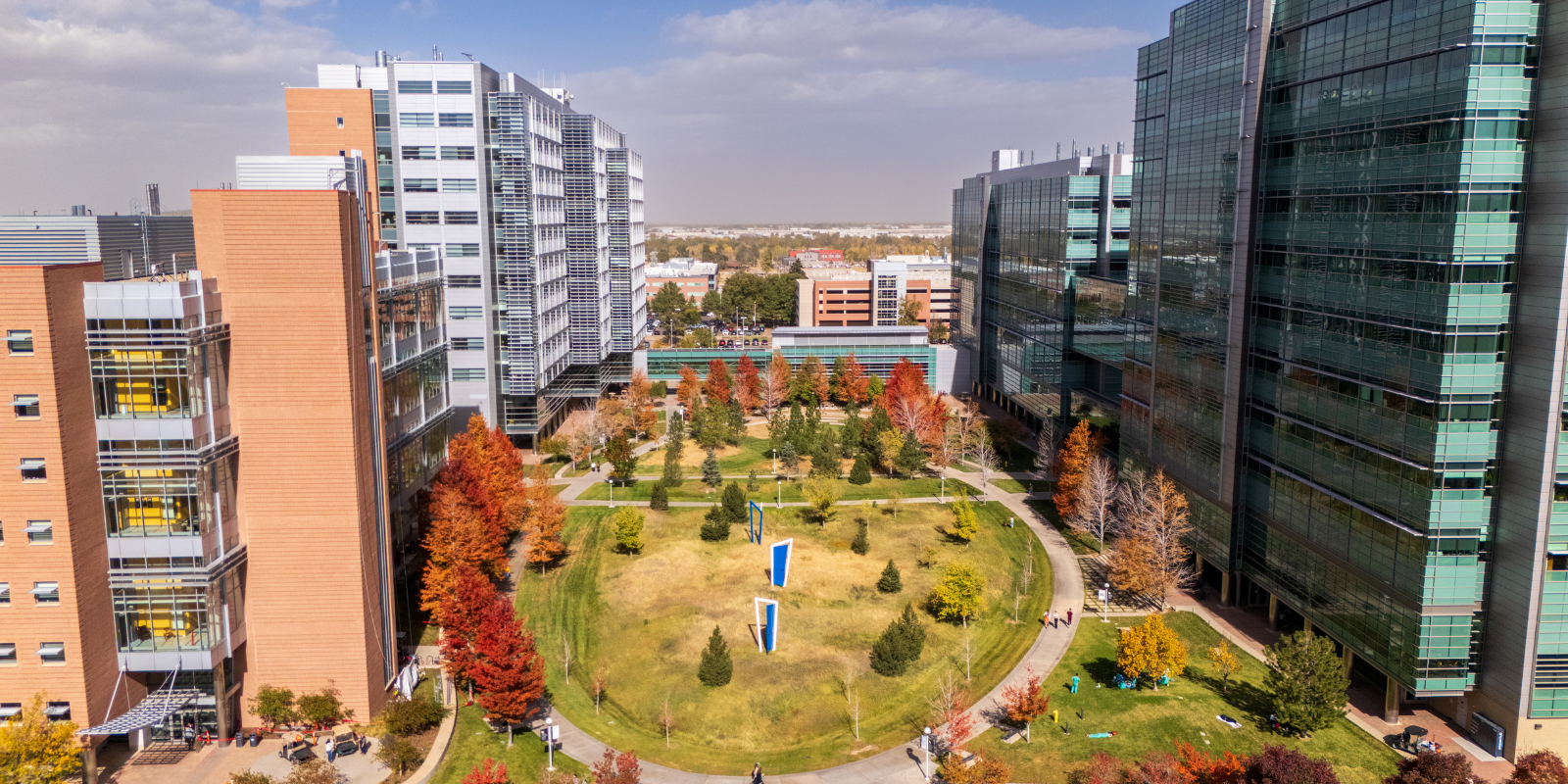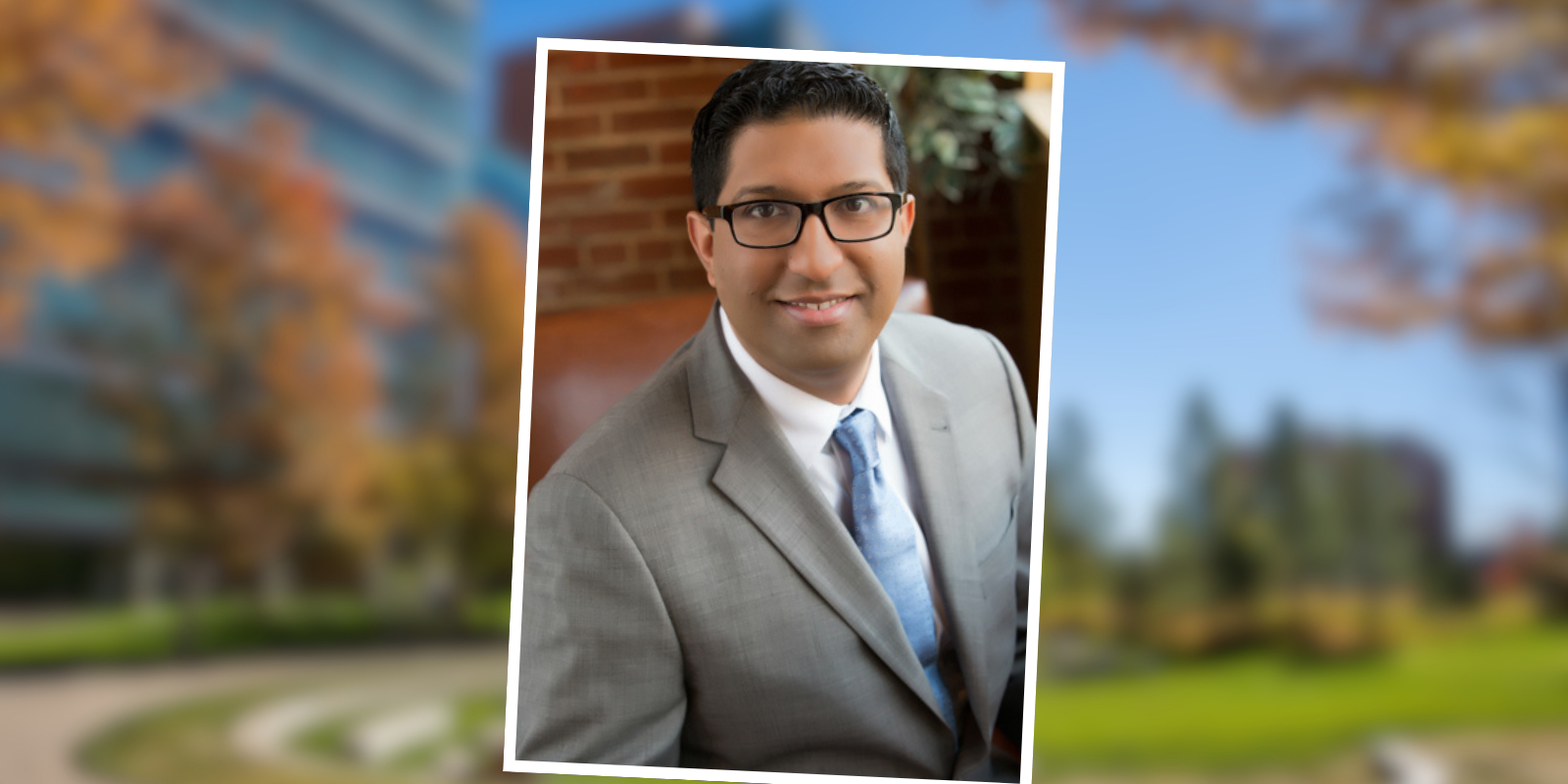There’s a saying in U.S. Navy aviation: No fast hands in a cockpit. That means if a warning light comes on or anything else happens to indicate an emergency, the pilot doesn’t immediately start poking buttons or yanking levers. They pause, they take a breath, they assess the situation, and then they respond.
Three and a half years into his medical studies at the University of Colorado School of Medicine, Dylan Schoo sees daily parallels between what he’s learning now and what he learned as a U.S. Navy pilot and flight instructor.
“In an examining room or in an OR, when something happens you take a step back, you take a breath, you draw from your training and experience,” Schoo explains. “Before every flight, you do pre-flight preparation where you’re looking at what’s the weather like, what’s this flight going to be like, what am I going to do if things go wrong, what’s plan B and plan C, and in medicine you’re doing the same. The rhythms of medicine are really similar to the rhythms of flying.”
Still on active duty in the Navy, today’s national observance of Veterans Day carries a lot of significance for Schoo – not only as a day to think about and honor all those with whom he served through his career as an aviator, but as he embarks on a new path into medicine and draws deep from the lessons he’s learned during his military service.
“One of the biggest takeaways for me is the Navy is very safety oriented,” Schoo explains. “The question is always what lessons can we learn from the past to keep our personnel safe in the future? I think that’s really helped my transition into taking care of others and being determined to be the best doctor I can be, needing to work and study hard, needing to be approachable and compassionate.
“I always remind myself that people are not at the hospital because they’re having a good day, necessarily, they may be having the worst day of their life, or it may be the last day of their life. A big part of what’s going to help me treat them is knowing that I’ve been through rigorous training programs before that prepared me for the worst day I might have in the cockpit, and coming through that realizing the training worked and I’m actually prepared to do what I need to do when I need to do it.”
Pursuing a dream to fly
Growing up in Montrose, Colorado, about as landlocked as he could be with mountains or mesas in every direction, Schoo dreamed of flight. His uncle had served as a U.S. Navy pilot and his grandfather as a Navy physician, so flying and the Navy are part of his heritage. Medicine is, too: His father is an orthopedic surgeon, his mother a nurse, and his sister a physician, “so medicine is always something I thought about,” he says.
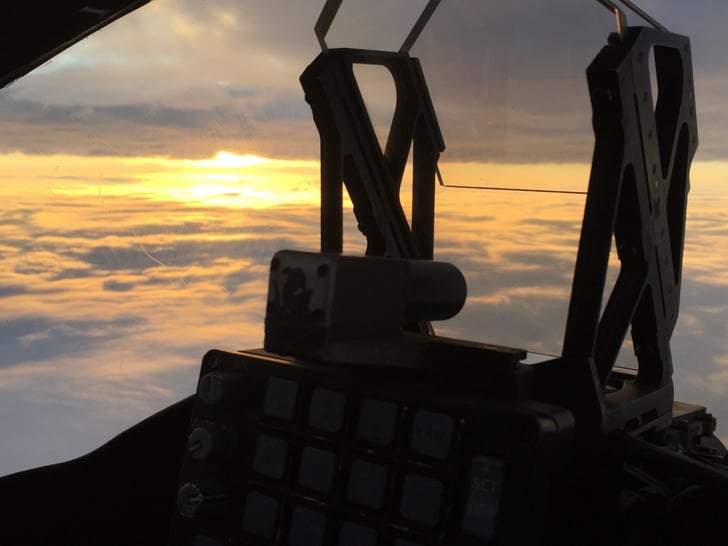
Dylan Schoo's view over the clouds from inside the cockpit
Flying was his first passion, though – “maybe I watched ‘Top Gun’ one too many times,” he jokes – and in high school he earned his private pilot license at Montrose Regional Airport. After turning down an appointment to the U.S. Air Force Academy, he committed to the University of Notre Dame and was turned down the first time he applied to join the ROTC during his freshman year.
That was an important lesson in learning to not give up and try again, he says, and he was admitted to the ROTC the following year, the same year of the Sept. 11, 2001, terrorist attacks.
“That was a motivator for a lot of people I knew, they wanted to do something, wanted to be part of something,” Schoo recalls. “I was already on that path, but it redoubled my determination to go serve, to be part of something bigger than myself.”
During his senior year, he was accepted for flight training and after graduating with his pre-med major, Schoo began training in Pensacola, Florida. He moved on to Corpus Christi, Texas, for primary flight training and earned the distinction of first in his class. There he was assigned to fly the E-2 Hawkeye, an all-weather, carrier-based command and control aircraft. He also trained on the T-45 Goshawk jet and later in his aviation career was an instructor on the T-45. On October 2006, just after his 25th birthday, callsign Butters earned his wings.
Every step and aspect of training moved him closer to joining Carrier Wing 2 on the USS Abraham Lincoln Nimitz-class aircraft carrier.
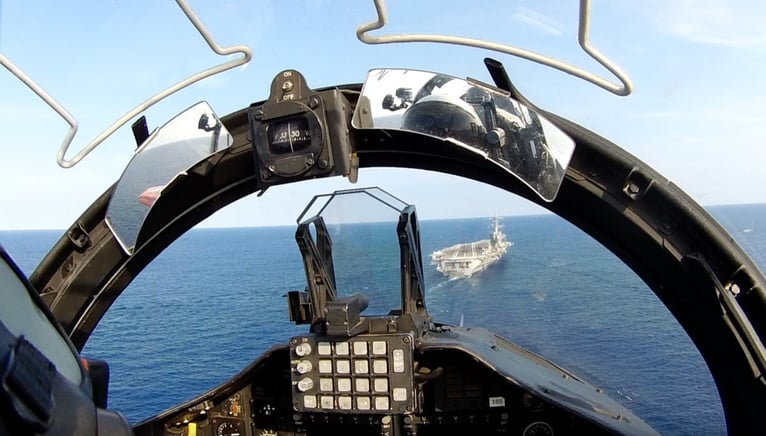
Dylan Schoo coming in for landing on an aircraft carrier deck
“There’s nothing quite as exciting as that first time you feel that tug of the hook on the arresting gear,” Schoo says. “You go from 120 miles per hour to zero in two and a half seconds. There’s nothing like it.
“Even before landing, I can remember thinking, wow, I really hope I know what I’m doing. This doesn’t seem OK but it must be OK. There are 1,000 people on this ship, they pulled the rods out of the reactor, loaded all this food onboard, and this aircraft carrier is out here steaming around so that Lt. J.G. Dylan can learn to land. It was a surreal moment.”
Translating military lessons to medicine
Schoo served two, seven-month deployments on the USS Lincoln as part of the 5th Fleet, supporting ground troops in both Iraq and Afghanistan. He went on to earn a position as a landing signal officer and then as a flight instructor.
After 11 years of active duty, Schoo considered his advancement opportunities with the Navy if he stayed on the flight instructor path, but ultimately decided to pursue medicine. In 2015 he requested to be decommissioned, having achieved the rank of lieutenant commander, and was out of the Navy for all of 10 minutes while he completed the paperwork to be recommissioned, this time back at the rank of ensign.
He completed a one-year post-baccalaureate course at the University of Colorado Boulder to refresh his math and science skills and applied to medical school. He wasn’t accepted.
"That was another time when what I learned in the Navy really helped, because you don’t just give up,” he explains. “You get back up and you work even harder.”
During the following year, he worked as a certified nursing assistant and retook the MCAT, improving his score by five points. On his second try, he was accepted to the CU School of Medicine, where he’s now a fourth-year student and focused on pursuing anesthesiology. His military scholarship stipulates that he will need to serve at least four years after completing medical school and a residency, so he and his new wife, Erica, are currently considering which of several options to pursue.
Initially, Schoo says, he wanted to pursue surgery, “but it’s true what they say that you’ll find the specialty that fits you best. Anesthesia is a perfect fit, because I’ll still be in the OR but I’ll also have a lot of opportunity to talk with patients and let them know that I’m there to help.
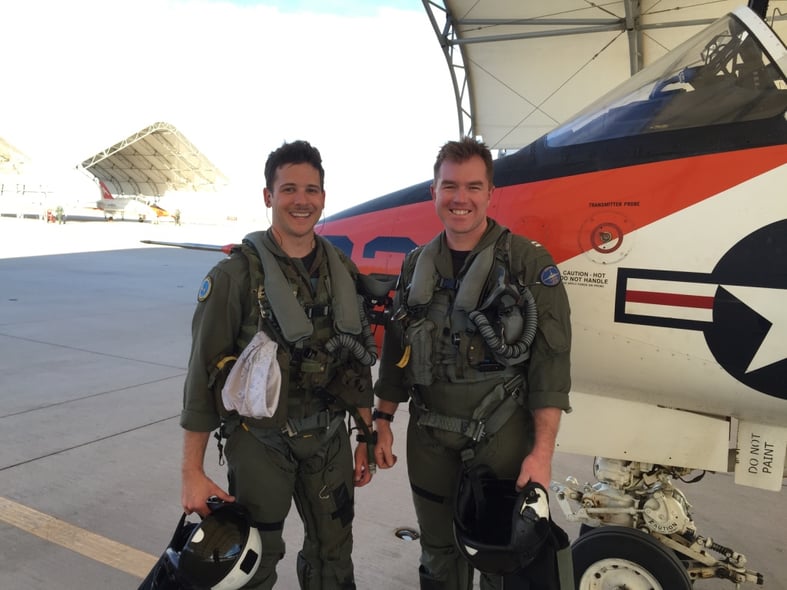
Dylan Schoo, right, with a former flight school student
“There’s a team aspect to anesthesia that I really enjoy, that’s really similar to being in the cockpit and relying on the other members of the crew to communicate and tell me there’s a fire.”
About that fire: Once Schoo was training with an entire air wing over Fallon, Nevada, when, once airborne, he noticed the oil pressure light was on. One of his best friends was in the back of the E-2 on that flight and told him over the intercom, “Yeah, we’re actually streaming oil out the right side.”
Schoo didn’t think it was too serious and they could just return to base, but then his friend was back on the intercom telling him, “Oh, yeah, we’re on fire.” Schoo checked the small rearview mirror and confirmed that yes, there was a fire on the plane’s right side. After getting confirmation from each crew member to activate the fire extinguisher, per protocol, he saw the fire wane then come roaring back.
“At this point I know we’ve got to get back to the ground and all these scenarios from training are running through my mind – that it could hit the fuel tank, that it could melt through the wing, and we don’t have ejection seats, just parachutes,” Schoo recalls. After emergency adjustments of the rudders, Schoo dropped the tail hook and landed the E-2 safely, later earning an Air Medal for his work that day.
The mindset that helped him land that day has helped him through his medical studies, he says, because “as a doctor I may face situations where lives are on the line and my actions are going to have serious consequences. I have this feeling that I need to get the best training I can and work as hard as I’m able to be the best doctor I can because people are going to be counting on me to help them through some of the most vulnerable times.”


